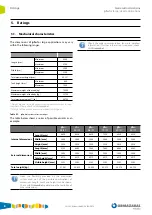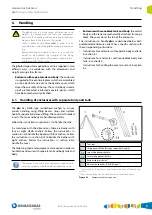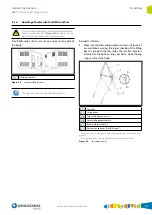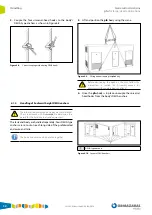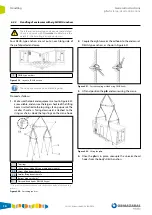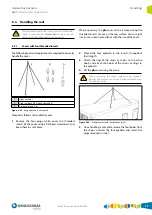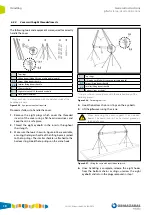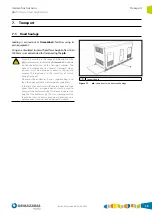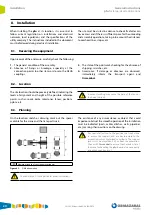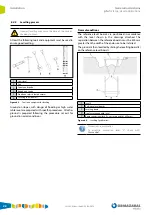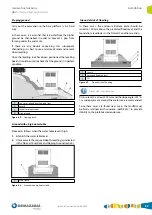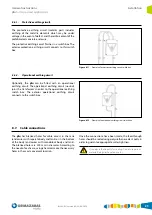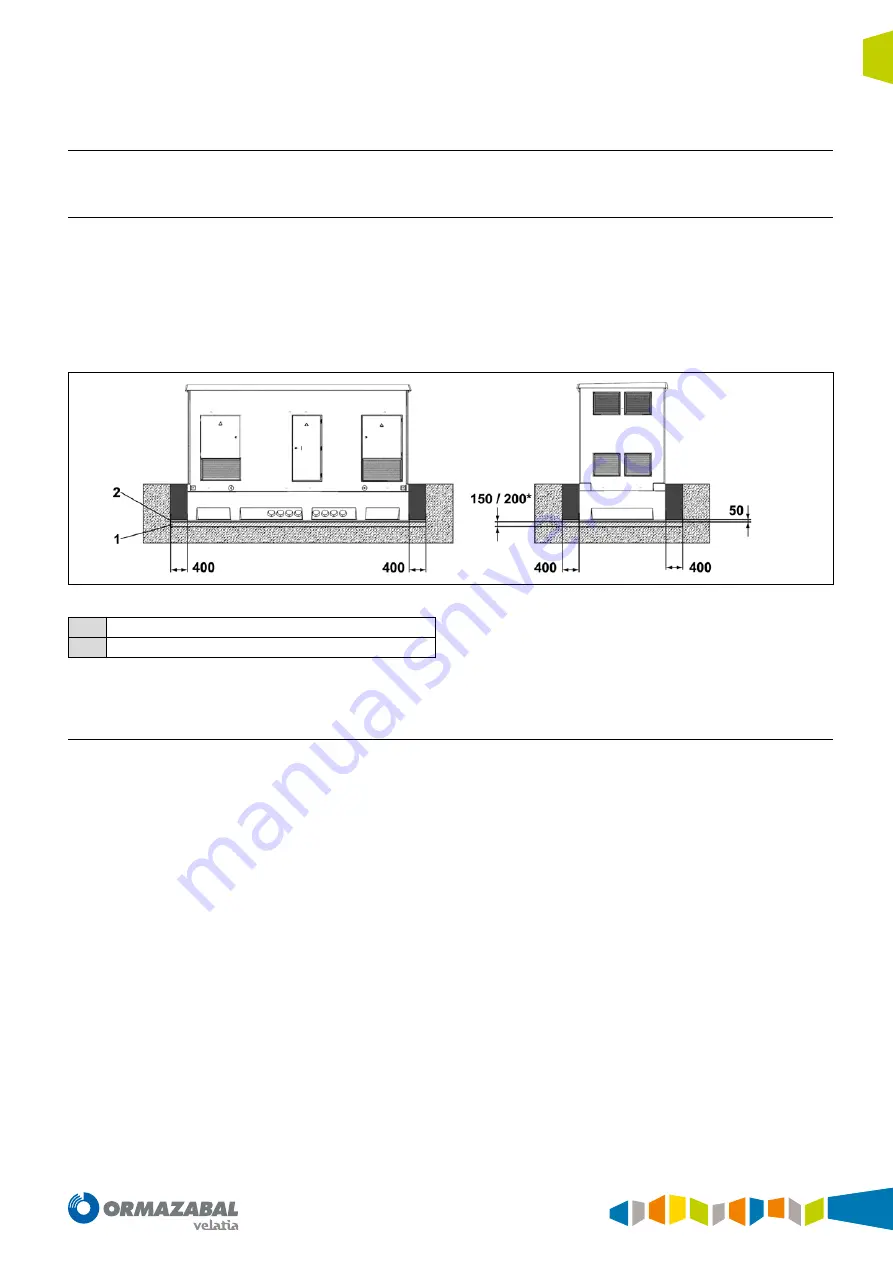
IG-262-EN versión 02; 26/04/2018
21
General instructions
pfu
for large-sized applications
Installation
8.4. Preparing the ground
8.4.1. Excavation drawings
The excavation levels shown below must be respected. The
ground must withstand the weight of the
pfu
. The pressure
exerted on the ground by the
pfu
never exceeds 1 kg/cm
2
.
If ground bearing capacity is insufficient, it may give way
or cause loss of levelling, producing differential settlement.
Such settlement may damage the
pfu
structure.
In this situation, a foundation concrete slab measuring
between 150 and 200* mm thick is required at the bottom
of the excavation in order to prevent damage to the
pfu
.
The slab must be reinforced with a mesh sized 100 mm x
100 mm and rebars measuring 8 mm in diameter. In order
to improve levelling, spread a 50 mm layer of compacted
sand uniformly on the concrete slab.
*Check with
Ormazabal
to define the thickness of the concrete slab.
1
Concrete slab
2
Levelling sand layer
Figure 8.2.
Excavation dimensions for
pfu
8.4.2. Safety recommendations
All actions and procedures must be carried out in
accordance with the General Safety Plan. There must be a
person designated as the Prevention Resource throughout
the duration of the activity on site.
The minimum health and safety requirements for
construction work should be considered when preparing
the ground. Among others:
• Before beginning to open, carry out a preliminary study
of the ground to know its stability and the possible
existence of conduits.
• Avoid accumulating excavated material and equipment
next to the edge of the excavation, taking the necessary
precautions to prevent the walls from caving in and
materials falling inside.
• In general, keep a 3 m area around the excavation free of
materials and vehicle traffic.
• In the case of rain and puddles, carefully inspect the
excavation with qualified technicians before resuming
the work. Carry out immediate pumping out of water
that may be present inside the excavation in order to
prevent the stability of the slope from being altered.
• Engine-driven machines that generate gases such
as carbon monoxide must not be placed inside the
excavation unless adequate equipment is used to
extract the gases.
• The operators that work inside the excavation must be
properly trained and informed and must use a hardhat
as well as the appropriate protective clothing for each
specific hazard.


